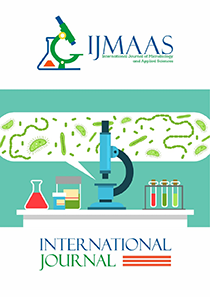Prevalence and Antibiotic Susceptibility of Carbapenem Resistant Pseudomonas aeruginosa isolated from Clinical Specimens from Teaching Hospitals in Port Harcourt
Vol 3, Issue 1, 2024
KEYWORDS
Carbapenem-resistant Pseudomonas aeruginosa, antibiotics susceptibility
Abstract
Carbapenem-resistant Pseudomonas aeruginosa (CRPA) has become a serious public health challenge exhibiting multi-drug resistance against different antibiotics. This study aimed to investigate the prevalence and antibiotic susceptibility pattern of carbapenem-resistant P. aeruginosa isolated over the period of one year from different clinical specimens from the Rivers State University Teaching Hospital (RSUTH) and from the University of Port Harcourt Teaching Hospital (UPTH) both located in Port Harcourt Metropolis in Rivers State. Clinical specimens: urine, wound swabs, ear swabs and stool were collected from patients admitted to the Teaching Hospital using standard techniques. Isolation and identification of P. aeruginosa were performed using standard microbiological methods. Antimicrobial susceptibility testing, focusing on carbapenem resistance, was carried out using the Kirby-Bauer disk diffusion technique. The prevalence of P. aeruginosa recorded for specimens collected from the RSUTH and UPTH was 0-61.9% and 2.9-22.9% respectively. P. aeruginosa was more prevalent in wound specimens than in other specimens in both hospitals. Results of the prevalence of Carbapenem-resistant Pseudomonas aeruginosa (CRPA) in the ear, stool and wound specimens obtained from patients in RSUTH were 30.8%, 7.7% and 61.5% while 28.6%, 14.3%, 9.5% and 47.6% were observed for ear, stool, urine and wound specimens, respectively from UPTH. Results of the antibiotics susceptibility showed that the isolates displayed multi-antibiotic resistance (MAR) to most of the antibiotics used in this study. Despite the MAR index of 0.2-0.5 observed amongst the isolates, gentamycin, ciprofloxacin and ofloxacin displayed great antibiotic activity against the isolates. Thus, they are recommended for use in the control of infections caused by P. aeruginosa as highlighted in this study.
Current: Vol. 4, Issue 1, 2025

Call for papers
The International Journal of Microbiology and Applied Sciences warmly welcome your valuable articles for publication.
